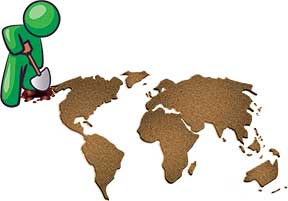As one of the articles in this special issue notes, geography is the discipline of “writing” or “drawing” the Earth. In many ways, it is the most fundamental of sciences, as it seeks to understand the ground upon which we stand: its composition, its behaviour, its structure, and its politics. It explores the changes that occur as a result of natural movements, as well as those that are generated in the interaction between people and their environments. The study of geography gives us a sense of the many interconnections that make up – and move – our physical world. This understanding could help us better preserve and manage these natural resources, and also appreciate the reasons for some of the conflicts among people of different regions. However, as many writers in this collection note, school level geography often leaves us with eyes glazed over and minds numbed. The subject ends up being less about critical thinking and doing and more about rote learning and agonizing hours getting a map “just right”. Consequently, we grow up with insufficient appreciation for the dynamics that drive our planet – the physical and human forces that shape it from day to day.

Geography and the various fascinating sub-disciplines it contains are rarely seen as viable options for higher education, with very few children even considering it seriously. This too is because we fail to emphasize the link between the content of the subject and the problems and processes that define our living world. Another problem is that it is unclear to students (and their parents) how one actually goes about becoming a geographer: does one reach it through science or social studies? Does it build upon a mathematical or a humanistic understanding of the world? What sorts of skills and abilities are required to make a competent geographer? The subject falls somewhere in between the clear-cut convenient division between the arts and sciences. This actually makes it ideal for the student who enjoys both, who could spend hours crunching numbers and dealing with data and unravelling narrative threads from historical records and people’s experiences.
As with each of our special issues, we have been able to only scratch the surface of this large and varied field. There are many aspects of geography we have not been able to include, but the attempt has been to get you to open up its teaching both in terms of method and content, and discover ways in which it can become exciting as a subject – so that some of your students might be inspired to dig a little deeper into the Earth’s past and present.
